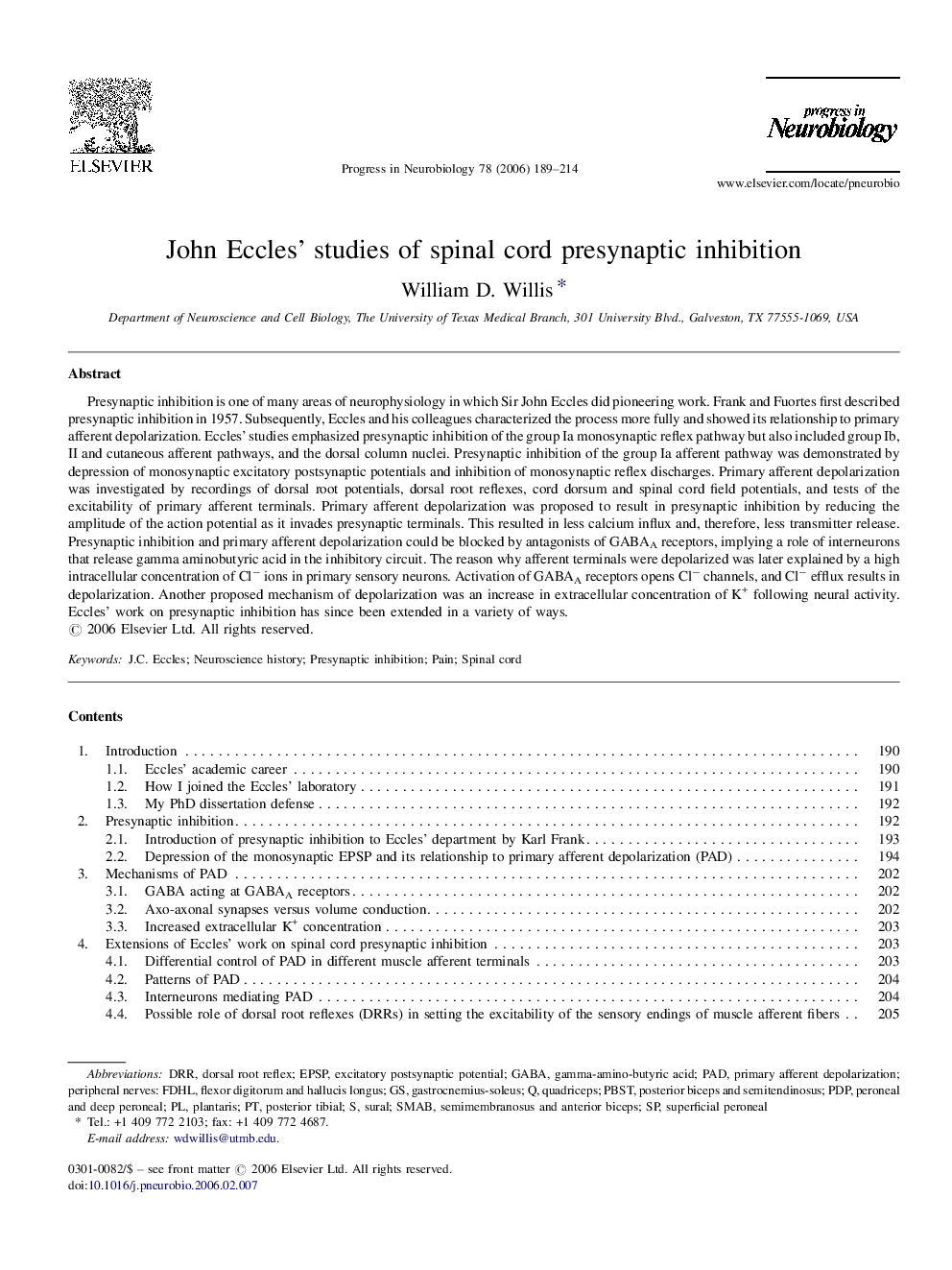| Article ID | Journal | Published Year | Pages | File Type |
|---|---|---|---|---|
| 4354064 | Progress in Neurobiology | 2006 | 26 Pages |
Presynaptic inhibition is one of many areas of neurophysiology in which Sir John Eccles did pioneering work. Frank and Fuortes first described presynaptic inhibition in 1957. Subsequently, Eccles and his colleagues characterized the process more fully and showed its relationship to primary afferent depolarization. Eccles’ studies emphasized presynaptic inhibition of the group Ia monosynaptic reflex pathway but also included group Ib, II and cutaneous afferent pathways, and the dorsal column nuclei. Presynaptic inhibition of the group Ia afferent pathway was demonstrated by depression of monosynaptic excitatory postsynaptic potentials and inhibition of monosynaptic reflex discharges. Primary afferent depolarization was investigated by recordings of dorsal root potentials, dorsal root reflexes, cord dorsum and spinal cord field potentials, and tests of the excitability of primary afferent terminals. Primary afferent depolarization was proposed to result in presynaptic inhibition by reducing the amplitude of the action potential as it invades presynaptic terminals. This resulted in less calcium influx and, therefore, less transmitter release. Presynaptic inhibition and primary afferent depolarization could be blocked by antagonists of GABAA receptors, implying a role of interneurons that release gamma aminobutyric acid in the inhibitory circuit. The reason why afferent terminals were depolarized was later explained by a high intracellular concentration of Cl− ions in primary sensory neurons. Activation of GABAA receptors opens Cl− channels, and Cl− efflux results in depolarization. Another proposed mechanism of depolarization was an increase in extracellular concentration of K+ following neural activity. Eccles’ work on presynaptic inhibition has since been extended in a variety of ways.
